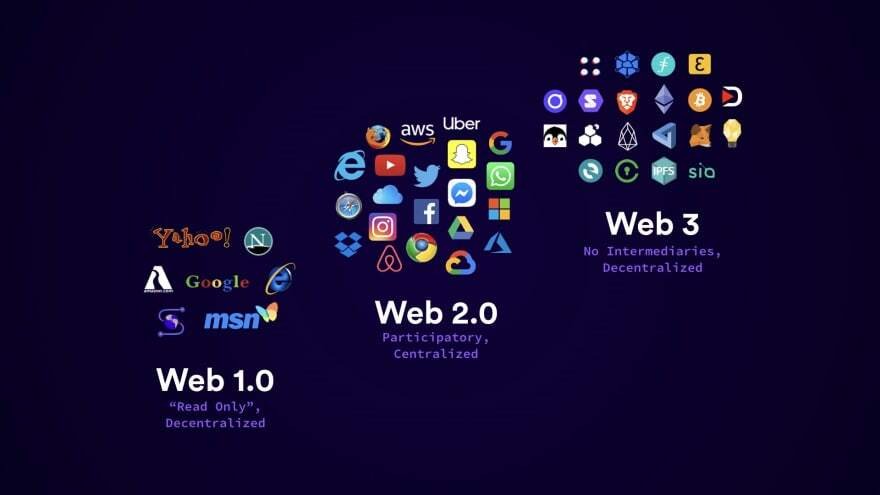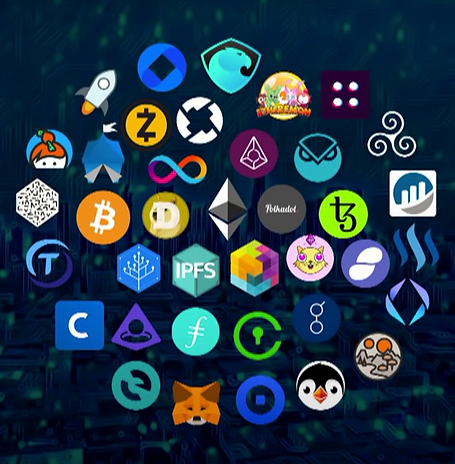Do you feel left out when someone talks about WEB 3.0?
Do you want to understand it in the easiest possible way? Then, you are at the right place! After reading this quick 3 minutes article, you’ll understand what is Web 3, how it works and why it’s considered revolutionary? Let’s begin!
Think about a new internet that understands everything you say! An internet where every piece of content you consume is more customized to you than ever before.
We are on the verge of a new era in online evolution. Early adopters term it as Web 3.0
While some early-stage Web 3.0 apps are now available, their full potential will not be realized until the new internet is fully incorporated into the web infrastructure.
So, what exactly is Web 3.0, how will it look, and what’s in it for you?
A Comparison of Web 1.0, 2.0, and 3.0

Web 1.0
The first version of the internet was available until shortly before 2000 where websites were primarily used as centralized data repositories. People could use websites to access information stored on servers and interact with them.
The key characteristics of Web 1.0 were:
- Static pages based on HTTP and HTML protocols.
- Limited real-time interactivity
- The use of just commonly used languages.Web 1.0 gave us Google, Microsoft, eBay, Amazon and many others.
Web 2.0 Here
In the early 2000s, a new internet generation emerged, which was more engaging and collaborative than the previous one. As a result of Web 2.0, more social media platforms, multiplayer games, and other real-time activities are available.
Data analytics, big data, and machine learning algorithms emerged as the internet evolved. Web 2.0 was more collaborative, adaptive, and business-oriented than Web 1.0.
Intelligence and interactions between people and websites move this version of the internet forward. Web 2.0 was more concerned with the internet’s front end, whereas Web 3.0 is more concerned with the back end.
What are the main principles of Web 3.0?
Incorporating Artificial Intelligence(AI) is one of Web 3.0’s most exciting elements. Machines have been trained to understand information from images, audios, and recordings to produce the material requested by the user.
AI is also important in business contexts as it can predict demand and strengthen client relationships, among other things. With the introduction of the Semantic Web, computers will better understand and respond to web content by interpreting meaning and emotion.
Artificial intelligence algorithms that increase the quality of the results they deliver make this possible. The usage of 3D visuals distinguishes Web 3.0 from its predecessors, allowing for a more realistic and engaging virtual environment.
This has had a significant impact on, among other things, company opportunities, online gaming experiences, tourism, education, and e-commerce.
Because of AI, information is now much more readily available. Communication between devices becomes more fluid when intelligence is introduced into systems.
Because of metadata, information on Web 3.0 is more connected. It is also aided by new technologies such as 5G and IoT. Now, the internet is accessible to anybody, everywhere, and on any device.

Is Web 3.0 already a reality?
Web 3.0 applications must process large amounts of data and convert it into facts and meaningful actions for users.
As they are still in the early stages, these applications have a lot of room for improvement. They are many years away from Web 3.0 apps capability.
Amazon, Apple, and Google are developing web 3.0 apps and products. Siri and Wolfram Alpha are the two latest examples of apps that use Web 3.0 technologies.
Siri
Apple’s voice-controlled AI assistant has advanced intelligence and capabilities since its debut with the iPhone 4S model. Siri uses a combination of speech recognition and artificial intelligence to carry out complex and personalized commands.
When you ask Siri or other AI assistants, such as Amazon’s Alexa or Samsung’s Bixby, questions like “where is the nearest cafe” or “make an appointment with Vaibhav at 11:00 am tomorrow,” they understand what you’re asking and respond quickly.
Wolfram Alpha
In contrast to search engines, Wolfram Alpha is a “computational knowledge engine” that responds to your queries with a list of relevant links.
If you want a more accurate comparison, look up “India vs South Africa” on Wolfram Alpha and Google and see what you come up with.
Because “cricket” is the most prevalent search phrase, even if you don’t include it, Google shows World Cup results. On the other hand, Alpha would offer you a comprehensive comparison of the two countries, as you requested.
This is the main difference between Web 2.0 and 3.0
What's the Future?
The new internet’s promise to provide a more fair online environment is expected to include an enhanced search engine, more customized browsing options, and other decentralized features.
This goal could be achieved by giving users more control over their data and enabling a broader overall experience through various future advances.
It isn’t easy to imagine, but when Web 3.0 arrives, the internet will become a massive part of our daily life. Smart technologies have already altered our thinking and behavior.
All of today’s typically offline machines, such as ovens, vacuum cleaners, and refrigerators, will be integrated into the IoT economy and interact with its autonomous servers and decentralized applications (DApps), advancing new digital realms such as blockchain and digital assets to power a wide range of new technological “miracles” for the 21st century.
Stay Safe, Stay Healthy and Take care of yourself and your Loved Ones.
Final Thoughts
That’s it for the quick guide, I hope that my content added a bit value to your time. If you think any other explanation could’ve been added, feel free to use the comment section and generate awareness within our community.
Till then, you can follow me to stay updated with the trends and get an insight about the markets. There’s a lot more coming in the upcoming days so do SUBSCRIBE the newsletter.
If you liked the content, feel free to share it within our community and if you didn’t liked the content, do let me know that too. So I can improvise next time!